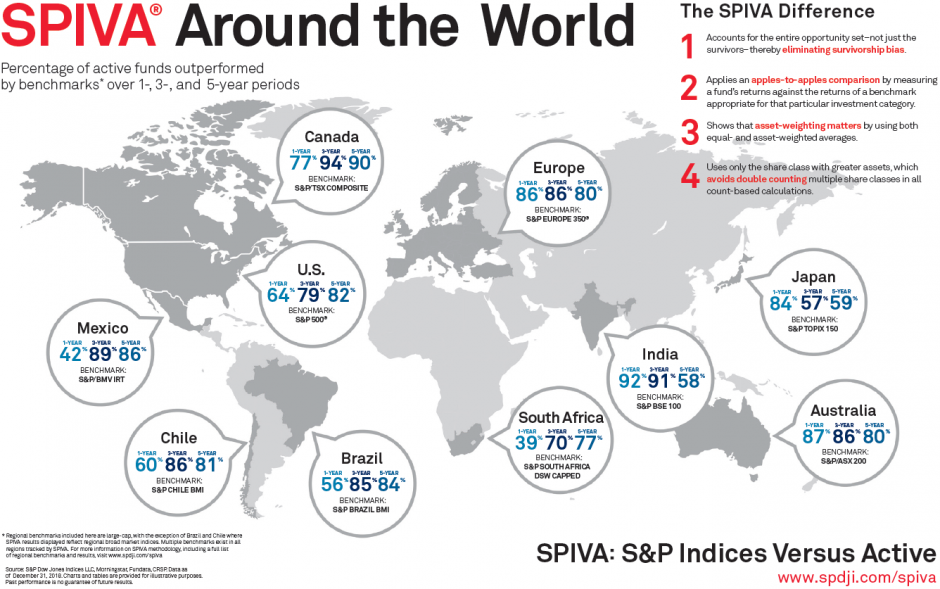
Australian Listed Equities
The Australian listed equity market has two characteristics not to be overlooked when constructing a domestic index: its relatively small number of stocks and relatively large exposures to a few specific sectors. These factors alone often mean that the application of a specific indexing methodology can produce more pronounced effects compared with the equivalent approach being applied to a global universe.
- Number of Constituents
The S&P/ASX 200’s relatively low number of companies imply that each company has a larger-than-average weight in the index for a given size. Therefore, any exclusionary indexing approach could cause relatively larger levels of tracking error and index volatility compared with more diversified benchmarks.

This indeed turns out to be the case. The S&P 500 ESG Index—an index with more constituents of lower average index weights—had a marginally higher standard deviation than the benchmark over five years, at only 0.03%, compared with the S&P/ASX 200 ESG Index’s larger 0.23% margin (see Exhibit 1). The Australian benchmark also had a higher five-year tracking error than its U.S. counterpart.
Companies in the S&P ESG Indices are selected for inclusion, targeting 75% of the eligible universe’s weight, at the GICS® industry group level. However, by looking at the sector-level proportions of benchmark market caps covered in the ESG index compared with the 75% target, some sectors over- or undershoot the target by a significant margin.
These margins in all but two sectors are larger for the S&P/ASX 200 ESG Index than for the S&P 500 ESG Index, which may be expected given the relatively higher weights of the average stock in the Australian index. The marginal inclusion of comparatively smaller-weighted stocks, on average, would likely leave the final industry group market capitalization closer to the 75% target. The same result can also be expected when considering coverage at the sector level (see Exhibit 2).

- Sector Concentrations
Any index benchmarked to the S&P/ASX 200 would also be sensitive to how its methodology treats companies in the Financials (32.10%), Materials (18.12%), Health Care (8.40%), and Industrials (8.22%) sectors due to their significant weights.[1]
The S&P/ASX 200 ESG Index’s sector weights differ slightly from their weights in the benchmark due to the exclusions made when defining the index’s eligible universe. The two largest sector weight differences are found within the Health Care and Financials sectors.
- In April 2019, Health Care had a 2.26% larger sector weight in the S&P/ASX 200 ESG Index compared with benchmark.
- In contrast, Financials was underweight in the S&P/ASX 200 ESG Index by 2.81 (see Exhibit 3).

The S&P/ASX 200 ESG Index – Index Performance
Despite some of the nuances of the Australian listed equities market described above, the S&P/ASX 200 ESG Index achieves its objective. The index delivers a substantial index ESG score improvement, while providing a benchmark-like risk/return profile.

In fact, for the period studied, the S&P/ASX 200 ESG Index provided better relative returns and index ESG score improvement compared with its benchmark than its U.S. counterpart (see Exhibit 4). Overall, the S&P/ASX 200 ESG Index had an index ESG improvement of 28% compared with benchmark, while providing the same five-year annualized returns.
The ESG improvement at the sector level ranged from 14% to 66% (see Exhibit 5). The Real Estate and Consumer Discretionary sectors’ ESG score improvements were the largest. In the case of the Consumer Discretionary sector, this large improvement might have been expected considering that the ESG index’s coverage of the eligible benchmark sector market cap was the lowest (63%, see Exhibit 2). This implies that the average company included in this sector was among the higher ESG scoring samples in the top of the distribution of eligible companies. Similarly, the relatively low level of ESG score improvement experienced by the Utilities sector was correlated with its overshooting of the 75% benchmark market capitalization target.

CONCLUSION
The S&P/ASX 200 ESG Index is designed to present the Australian equities market with an alternative and investable ESG option to the widely adopted S&P/ASX 200. It can provide an increased exposure to the companies with better ESG characteristics in the S&P/ASX 200, with a similar risk/return profile. By bringing this ESG strategy to the flagship benchmark, investing through an ESG lens has never been easier.
For more information on the S&P/ASX 200 ESG Index, please visit https://spindices.com/indices/equity/sp-asx-200-esg-index-aud
Additional Resources on the S&P ESG Index Series
- FAQs: S&P ESG Index Series
- Steadman, Reid, and Perrone, Daniel. “The S&P 500® ESG Index: Integrating Environmental, Social, and Governance Values into the Core.” S&P Dow Jones Indices. April 2019
- The S&P ESG Index Series Methodology
- Part One of this Blog
[1] Weights denote these GICS sector weights in the S&P/ASX 200 as of the adjusted close on April 30, 2019.
The posts on this blog are opinions, not advice. Please read our Disclaimers.




















































